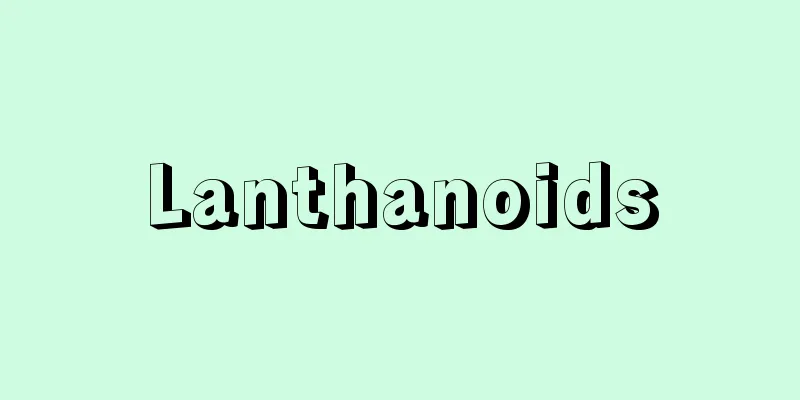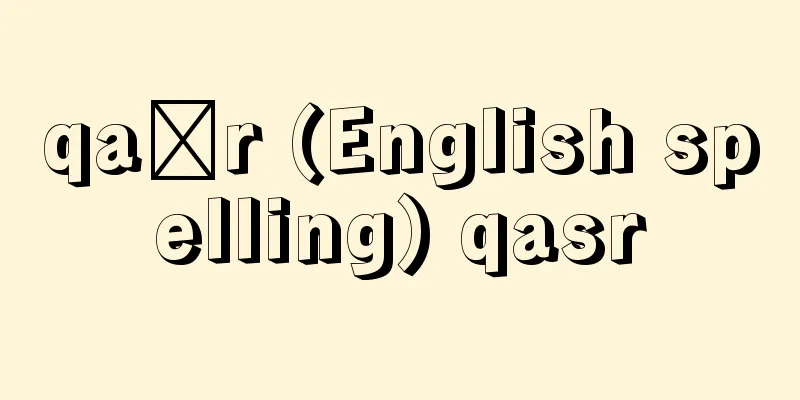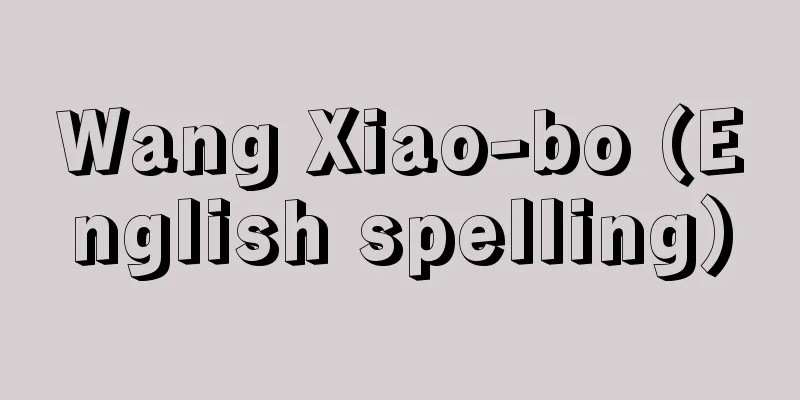Lanthanoids

|
A general term for the 15 elements from element 57, lanthanum, to element 71, lutetium. Also called the lanthanides. In the past, separation of either of these from the raw ore required repeated fractional crystallization and other processes, which was very time-consuming until the development of the ion exchange resin method. This is because the arrangement of valence electrons in the outermost shell is almost the same, and the ionic radius is also almost the same. In other words, when arranged in order of atomic number, the number of electrons outside the nucleus increases in the 4f orbitals in the inner N shell. Therefore, the overall size of the atom does not change much, and the ionic radius decreases little by little as the charge of the nucleus increases by one unit. This is also seen in the actinides, which are located just below the lanthanides in the same group in the periodic table. As a result, hafnium, tantalum, and other elements that come after the lanthanides have almost the same ionic radius as zirconium and niobium, respectively, unlike the other groups, and it is known that separation between them is difficult. This decrease in ionic radius seen in the lanthanide and actinide series is called lanthanide contraction and actinide contraction. For example, the ionic radii of the trivalent lanthanide ions are as shown in Therefore, the ionic radii of hafnium, tantalum, and tungsten, which come after the lanthanides, are almost the same as those of the homologous elements in the previous period, as shown in . [Nakahara Katsunori] "Inorganic Chemistry, Volume 2, by F.A. Cotton and G. Wilkinson, translated by Katsunori Nakahara (1988, Baifukan)" ▽ "Inorganic Chemistry: The Basics, by D.M.P. Mingos, translated by Yoshihiko Hisashi (1996, Kagaku Dojin)" ▽ "Inorganic Chemistry, by Taro Saito, edited by Yoshio Umezawa, Koichi Ohno, and Takahito Takeuchi (1996, Iwanami Shoten)" [References] | | | | | | | | | | | | | | | | | | | | | | | |©Shogakukan "> Periodic Table ©Shogakukan "> Ionic radii of lanthanide ions [Table 1] ©Shogakukan "> Lanthanide Contraction (Table 2) Source: Shogakukan Encyclopedia Nipponica About Encyclopedia Nipponica Information | Legend |
|
57番元素ランタンから71番元素ルテチウムまでの15元素の総称。ランタニドともいう。 いずれも原鉱石から分離するときは、古くは分別結晶などを多数回繰り返すことが必要で、イオン交換樹脂による方法が開発されるまでは多くの手間がかけられた。これは最外殻の原子価電子の配列がほとんど同じで、しかもイオン半径がほぼ同じであることによる。すなわち、原子番号の順に並べたときの核外電子の増え方は、最外殻のP殻は変わらず、O殻もほとんど一定で、さらに内側のN殻にある4f軌道で順次電子数が増えている。このため、原子全体の大きさはあまり変わらず、原子核の電荷が一単位ずつ増えることによって、イオン半径は少しずつ減少していく。このことは周期表で同じ族のすぐ下にあるアクチノイドでもみられる。この結果、ランタノイドのあとにくるハフニウム、タンタルなどは他の族の場合と違って、前の周期のジルコニウム、ニオブとそれぞれほぼ同じイオン半径をもつことになり、それぞれの間の分離が困難であることで知られている。このようなランタノイドおよびアクチノイドの系列中でみられるイオン半径の減少を、ランタニド収縮およびアクチニド収縮とよんでいる。 たとえば、ランタノイドの三価イオンのイオン半径はのようであって、このためランタノイドのあとにくるハフニウム、タンタル、タングステンでは前の周期の同族元素とほとんど同じ半径をとることになり、のようになる。 [中原勝儼] 『F・A・コットン、G・ウィルキンソン著、中原勝儼訳『無機化学』下巻(1988・培風館)』▽『D・M・P・ミンゴス著、久司佳彦訳『無機化学 基礎の基礎』(1996・化学同人)』▽『斎藤太郎著、梅沢喜夫・大野公一・竹内敬人編『無機化学』(1996・岩波書店)』 [参照項目] | | | | | | | | | | | | | | | | | | | | | | | |©Shogakukan"> 周期表 ©Shogakukan"> ランタニドイオンのイオン半径〔表1〕 ©Shogakukan"> ランタニド収縮〔表2〕 出典 小学館 日本大百科全書(ニッポニカ)日本大百科全書(ニッポニカ)について 情報 | 凡例 |
Recommend
Sargassum thunbergii (English spelling) Sargassumthunbergii
…[Mitsuo Chihara]. . . *Some of the terminology t...
Dendrobium tosaense (English name) Dendrobium tosaense
… [Ken Inoue]. … *Some of the terms that mention ...
Agatha (English spelling)
A saint who was martyred in Catania, Sicily, aroun...
Jerboa (jump rat)
A general term for mammals of the Dipodidae family...
Osaka Conference
The conference was held in Osaka in January and F...
Yalu River - Oryukko
The largest river in Korea, it flows along the bo...
Kyukokakuhon - Kyukokakubon
…The Thirteen Classics Commentaries, the Shuowen ...
Shojiro Kineya (Shojiro Kineya)
Nagauta shamisen performer. There have been six ge...
Shelford, VE (English spelling) ShelfordVE
…American ecologist. Born in New York State. He s...
Public interest corporation - Koueki Hojin
A corporation that has the purpose of providing p...
Rough grass planthopper - Rough grass planthopper
...It is distributed in Honshu, Shikoku, and Kyus...
Mountain worship - Sankakushinko
This refers to giving religious significance to m...
Karakhan, LM (English spelling) KarakhanLM
…It is a declaration by the government of the Rep...
IMC - Integrated Marketing Communications
(1) Because the marketing and communications depar...
Ohara Museum of Art
An art museum in Kurashiki, Okayama Prefecture. I...









